Pea thinking The biggest feature is to guide children to establish an efficient mathematical thinking model in the entertaining learning atmosphere, and cultivate their practical ability to actually apply their thinking in the problem solving.At the same time, in the small class learning environment, cultivate childrenA proactive learning attitude can be performed with the same excellent performance in all other subjects.
Pea thinking and AirClass Kids Similar, they are the most popular Online mathematical thinking course It is very helpful for cultivating children’s logical thinking and cognition.
Pea thinking Adopt international advanced 6E teaching methods, that is, E ngage (import), E Xplore (exploration), E XPLAIN (Explanation), E XTEND (Expand), E XPress (expression), E Valuate provides a thinking course that is in line with their learning characteristics for children aged 3 to 12.Between the vibrant and fun classroom atmosphere, help children learn to answer questions through understanding, avoid traditional mechanical solution thinking thinkingModels, at the same time, will guide children to think about problems again in many ways, thereby changing the traditional single thinking mode.And our parents can understand the children’s learning situation in real time in a comprehensive teaching system to grasp the learning progress of the children.
Pea mathematical thinking courses mainly cultivate children’s mathematical thinking methods, that is, to cultivate children’s Cognitive Thinking and Reasoning.Many primary schools and middle schools in the United States are set up Genius class course(Referred to as Gifted and Talent Program), you need to take the exam for admission.The course of pea thinking is particularly suitable for children who want to be admitted to the genius class.
Pea thinking provides special trial rewards for readers of American Life Guide, and you can get a trial class to get a gift $ 20 gift card The quantity is limited.
$ 20 gift card registration link
Directory of this article
- What is pea thinking?
- Pea thinking price
- Why choose pea thinking?
- Pea Thinking Course Introduction
- common problem
- More academic thinking courses
What is pea thinking?
Pea thinking, focusing on the training of mathematical logical thinking, concentration training, and good learning habits of children aged 3 to 12, focusing on the 5C model of the 21st century core literacy 5C model, with interest, independent thinking, and innovative practice.Cultivate children’s five key abilities and carry the course system of four major content sectors.The course is based on exploring the comprehensive problem solutions as the main learning model.It is based on the strategies, methods, and tools to solve problems, and combines the formulation of personalized learning solutions to guide children to think, analyze, solve, establish and establish and establish and establish and establish and establish and establish and establish and establish.The close connection between the world.
Pea thinking is an interactive learning platform launched by China Guangdong Happy Seed Technology Co., Ltd.in 2016.Taking “Interesting, Independent Thinking, Practical Innovation” as the direction, it is built through 4 major content modules A complete learning method system Provide strategies and tools to solve problems, so that children to think, learn efficiently, and use them.
What is the difference between pea thinking and conventional mathematics?
| Common mathematical education issues | The direction that needs to be cultivated | Routine learning | Pea thinking |
|---|---|---|---|
What should I do if my child doesn’t like mathematics? | Excavation | The conventional learning method is based on independent knowledge points.It is difficult to form global vision in learning, so that many children do not know why they should learn. | Pea thinking courses are introduced with a bright and interesting scene, and the familiar plots make children feel very involved.The curriculum is based on life problems, combined with mathematical ideas, and planned the foundation of the primary color Problem game, Refine effective thinking models. |
What should I do if my child is not good at summing up the steps of math problem solving | independent thinking | Conventional learning will learn a lot of knowledge, but the method strategy is not focused, and children do not form an effective strategy and their own way of thinking in their learning. | Through model construction and the use of thinking tools, improve their thinking ability, cultivate children to learn in strategic and logical methods, and gradually form their own way of thinking through practice. |
What should I do if children do not apply mathematical knowledge? | Practical innovation | Lack of experience, easy to forget, difficult to migrate | Children need a lot of experience to solve the problem.In the pea thinking class, children through analysis, modeling and comprehensive applications have enabled the knowledge in the school to be consolidated, such as When dealing with the problem of time planning The ability to understand time, computing ability, statistics, and generalization has been expanded and promoted.It is a higher-level application than pure knowledge learning.Therefore, after learning courses, it helps to learn on weekdays. |
The teaching concept of pea thinking
Pea thinking integrates the teaching concepts of famous educators Dewey and Piajie into their curriculum settings, namely:

“Children’s cognitive development assist children from excessive and semi-specific to abstraction.” This concept is in line with the child’s cognitive development, so different children can quickly understand the content of the curriculum in different stages of learning.
“Taking children as the center, doing middle school/playing middle school”, this concept is in line with the child’s learning preference.The children’s performance in the whole class is very positive.Our parents, looking at the courseware, also felt that they did be entertaining.
Cultivation goals of pea thinking
Pea thinking When introducing the curriculum, they introduced their training goals in detail.They required their own courses to cultivate children’s firm grasp of basic content, strong cultivation of thinking ability, and effective construction of learning behaviors and emotions.Their official introduction also listed the training goals in detail, and generally consistent with the expectations of our parents.
- Master of basic content: Help children establish a progressive structure from the cognitive layer to the method layer to the application layer, help children to solid the basic content, and learn to apply effective application methods at the same time.
- Cultivation of thinking ability: Cultivate multi-dimensional training development models of creative thinking, analytical thinking and practical thinking, and guide children to develop problem awareness, thinking quality and thinking methods.
- Construction of learning behavior emotions: Establishing a good learning behavior during the lectures.Under the guidance of the classroom teacher, develop autonomy, planning, focusing, efficient, self-introspection, listening, reading, writing, and problem-solving.During the learning process, I am full of interest and confidence, sharing, diligent thinking, courageous questioning, and well-being of a positive emotional attitude.
Cultivation goals of pea thinking
Before the audition class, the teacher of pea thinking introduced to me the ability of my child to learn through pea thinking.There are mainly the following aspects.During the audition class, I listened to the whole process.Some of the contents of the contents were indeed cleverly integrated into the curriculum settings.In the case of just one lesson, the child has already mastered a little logical reasoning ability.After the class, it will be seen from the class, so it can be seen that pea thinking does use his mind in the course arrangement.

- Logical reasoning ability: Children can learn a variety of logical thinking methods, actually experience the reasoning process of induction, analogy, and interpretation in the curriculum interaction, cultivate their ability to judge and reasonable laws, obtain the inherent logic relationship between things or phenomenaAbility.
- Practical innovation ability: In the course, guide children to think, practice and innovate from multi-angle, multi-level, multi-structure, multi-structured, and multi-structured exploration to improve the uniqueness, profoundness and broadness of children’s thinking in order to solve different problems and carry out different specific practices.When activities and explorations, you can face independently with excellent exploration spirit, practical ability, innovative consciousness and thinking.
- Life application ability: Use known conditions to solve problems in different actual life scenarios in curriculum, improve thinking and operational ability to deal with different problems in the face of actual life.
- Strategic analysis ability: In the course, use a variety of methods to solve the problem.In the process, cultivate the flexibility and depth of thinking, and then in the later use, you can quickly find the breakthrough of different problems and flexibly adjust the solution strategy.
- Model construction ability: After advanced learning, cultivate children to use proper thinking tools and visual graphics to establish links between different things, and comprehensively analyze the results, improve abstract generalization and migration applications, so that different issues and scenes in actual life areAmong them, you can quickly abstract the basic model of problems and find the corresponding solution.
Teaching module of pea thinking
The courses of pea thinking are roughly divided into four modules: basic ability, thinking tools, puzzle strategies, and problem practice.They have been reasonably arranged in the 60 -minute course.The connection between different modules is very natural.After walking, I reminded him to take a good class next to me.
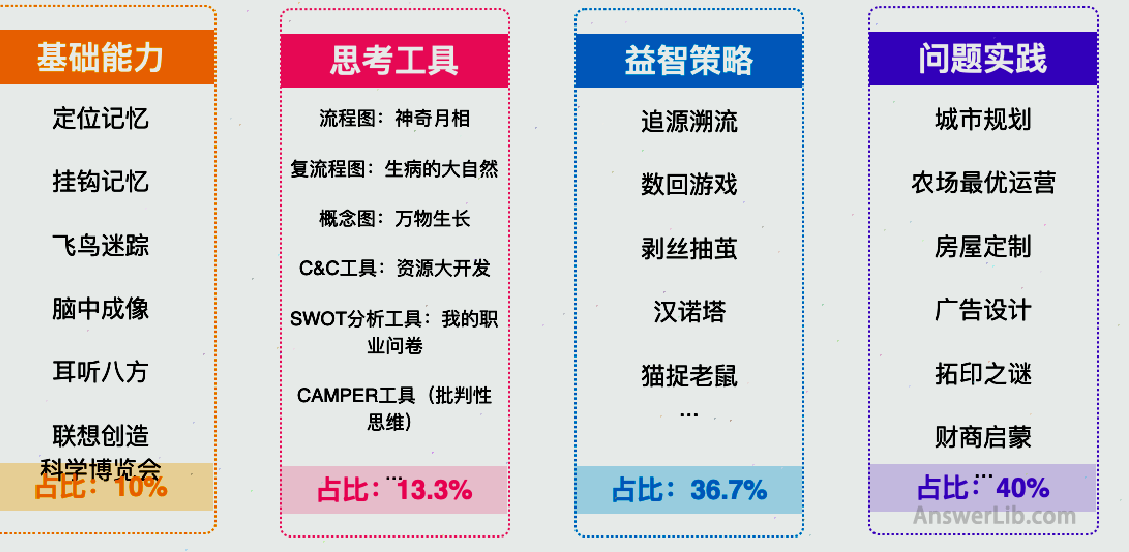
Cultivation of basic ability
In the pea thinking courses, through the combination of courseware and teaching aids, children’s memory, concentration, observation, etc.are cultivated in the basic learning ability that is conducive to all disciplines.
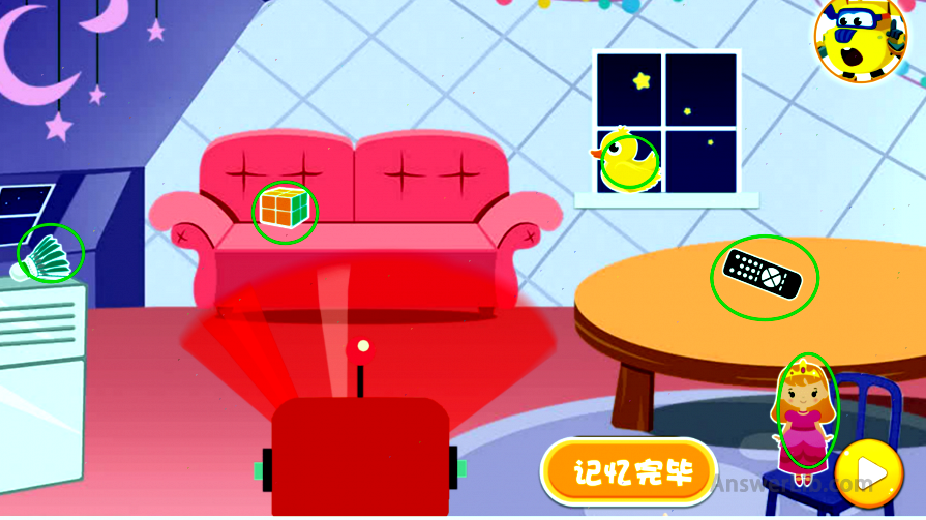

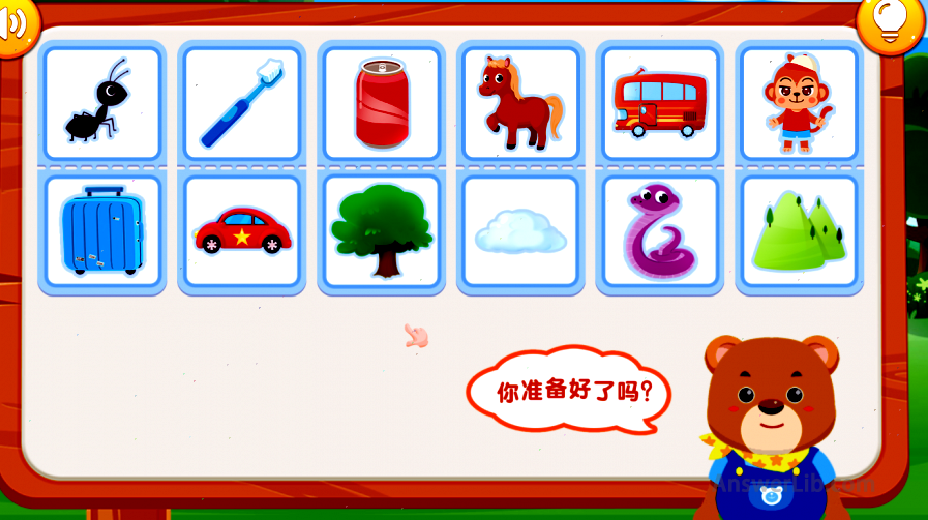
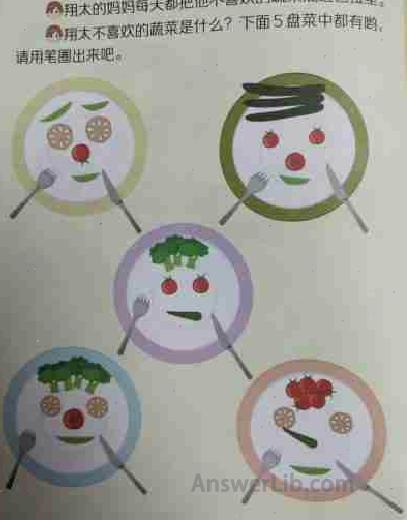
Thinking tool
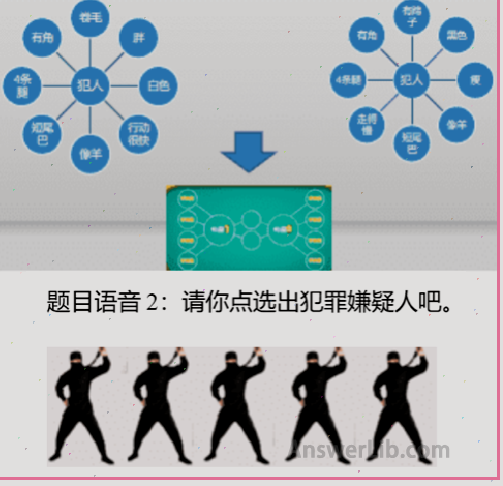
Focusing on the visualized thinking tools and thinking strategies, it focuses on learning and applications, enhance the meticulousness of children’s overall thinking logic, guide children to fix abstract problems in the brain, and then comprehensively analyze and determine scientific strategies.
Puzzle strategy
In the pea course, a variety of puzzle thinking games are used as the medium.In the process of game exploration and challenges, they organize ideas, formulate strategies, and help children actually apply their acquired thinking models to learning and life.

Problem practice
In the course, multiculturalism, including humanities history, life sciences, natural common sense, and social problems.Through the form of project analysis and plan design, children will interconnect the children’s knowledge with reasonable logic, and then solve problems and innovative practice.Ability.
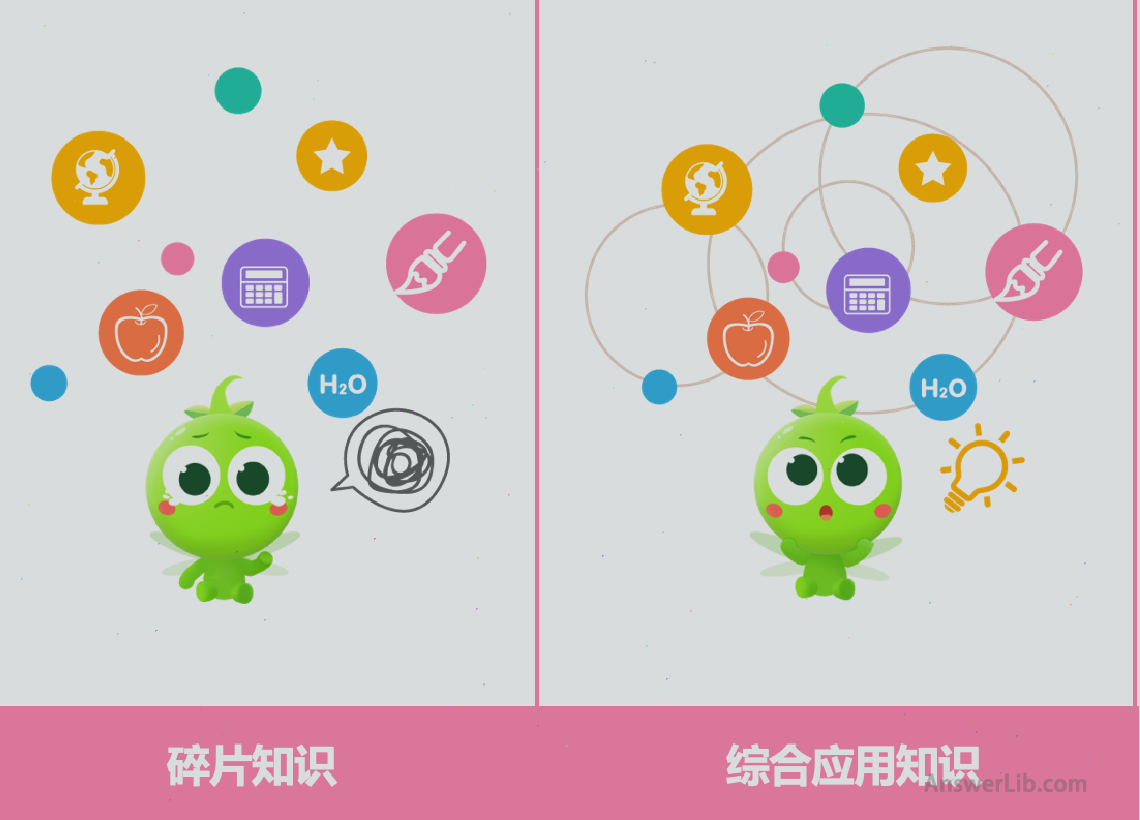
Teaching method of pea thinking
Pea thinking adopts teaching methods combined with real-time online lectures and teaching aids to provide children with a more comprehensive learning experience.In the learning model of the small class system, a vibrant learning atmosphere is created for children.At the same time, it is encouraged to compete between academic companionship and stimulate children’s learning motivation and passion.At the same time, pea thinking provides children with a variety of teaching aidsIncluding the designs of the follow-up teaching aids for all courses, together with teachers, actively operate the teaching aids to understand the teaching content more specificly, and the game teaching aids used after class to satisfy the children through the practice of teaching aids when studying independently.The purpose of playing middle school and playing in school also provides cooperation interactive teaching aids to encourage children to carry out with friends to cultivate children’s team collaboration ability.
Pea thinking student service system
Pea thinking always insists that learning is not a child’s business, there is a comprehensive student service system, closely combining children, our parents and teachers, and helping children create a better learning atmosphere in an integrated atmosphere.I immediately received the course summary video, and the teacher also gave a detailed analysis, which was very practical.

The student service system of pea thinking covers six items:
- Course summary: Provide curriculum summary through animation videos, and review at any time after class to help children and our parents easily understand the key points of classroom learning.
- Learning report: The study report will be generated in real time after each class.Children’s classroom learning performance is presented in data, which can be understood more intuitive.
- Our parents’ classroom: provide family education and mental training methods for our parents, and share the latest educational information happily.
- Our parent guidance video: match the corresponding guidance videos for each lesson, so that our parents can guide after class.
- Course review: After the get out of class, the system automatically generates the courses back.Children and our parents can more conveniently and quickly review the content of the curriculum and review them in time.
- Our parents’ monitoring: Our parents can see the most natural performance of their children in real time.
Pea thinking price
The price of the pea thinking we get is shown below.Please contact the customer service teacher to learn more about the current specific price:
| Class package | Number of hours | Exclusive courses benefits (only new students) | price |
|---|---|---|---|
Autumn class | 13 | Gift: 2 live lessons, 12 AI Enlightenment courses, 8 AI Rubik’s Cube Boutique Course | ¥ 1588 |
Seasons | 27 | Gift: 3 live lessons, 12 AI Enlightenment courses, 8th AI Rubik’s Cube Boutique Course | ¥ 3188 |
54 class package | 54 | Gift: 6 live broadcast lessons, 12 AI Enlightenment courses, 8 AI Rubik’s Cube Boutique Course, Concentration Training Camp | ¥ 5888 |
101 class package | 101 | Gift: 10 live lessons, 12 AI Enlightenment courses, 8 AI Rubik’s Cube Boutique Course, Concentration Training Camp | ¥ 8888 |
Why choose pea thinking?
We choose pea mathematical thinking courses, mainly to consider several characteristics of pea thinking:
- Real-person scene lectures: Teachers and accompanies are online real-time interaction, and they are sparking in human wireless thinking between human wireless thinking between interaction with real people.
- Small class system teaching: Pea thinking adopts a small class system.Teachers can take care of all children while building a benign competitive atmosphere between children and stimulate children to learn enthusiasm.
- Targeted class: Before entering the class, the class teacher of the children will understand the child’s personality, learning progress, and learning habits, and then divide it to the class that is most suitable for children according to the specific situation of the children.Together with the academic companion with similar learning status, constantly stimulate your potential.
- Data analysis learning situation: Pea thinking will generate real-time learning reports after each lecture.In the form of visual data, the children’s performance in the classroom will be analyzed in a timely manner.After the classroom, correct and make up for it in a timely manner.At the same time, the exercises that the children need to complete will also generate data reports to analyze the children still have not understood content when they use the contents of their learning.Master the content learned.
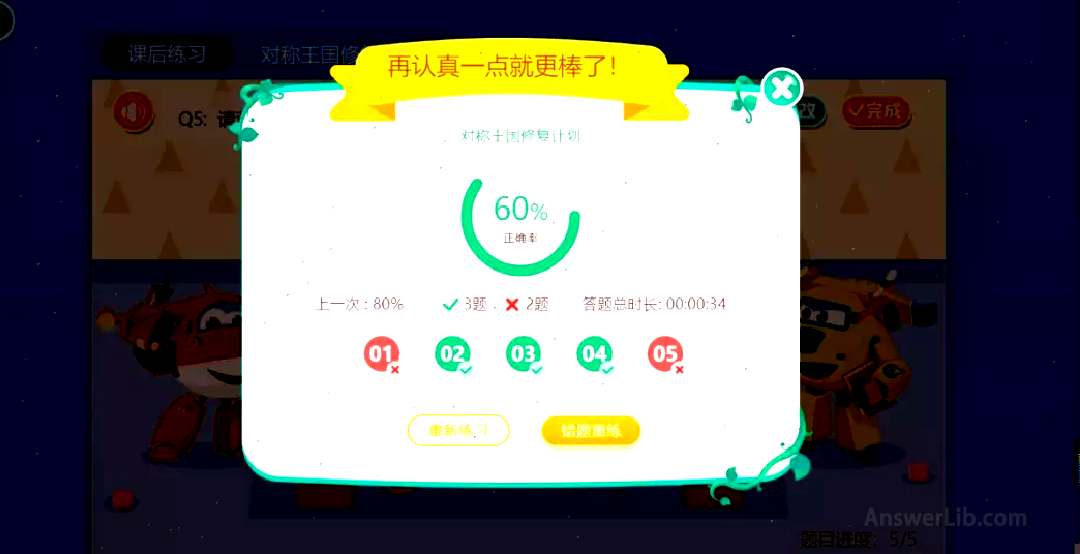

- Encourage long-term participation: Pea thinking provides a complete curriculum system, setting functions such as “our parents’ monitoring”, “our parent classroom”, “our parent guidance video” and other functions for our parents.At the same time, let the children feel that our parents value themselves.
- Cooperate with teaching aids: According to different learning stages, pea thinking has prepared children to teach, game teaching aids, and cooperation interactive teaching aids for children to satisfy children in class to see the content of the classroom more specifically through physical operations.Continue to practice different teaching aids to consolidate what they have learned, stimulate their unique thinking sparks, and cultivate important team cooperation capabilities.The following is the teaching package that the teacher will get the teaching aids will be obtained by the official purchase of lessons.

Pea Thinking Course Introduction
1. Curriculum setting of pea thinking
Pea thinking conducts scientific content for each course to cultivate children’s all-in -one learning literacy.
- Thinking training: By preparing targeted learning content through the characteristics of the thinking logic of children at different ages, provides more concrete content among young children, combined with actual teaching aids to help cultivate children’s ability to cognition and recognition, and and alsoIntroduce the concept of junior analogy and replacement to prepare for the next stage; in the children’s age group with semi-specific curriculum content, guide children to master more clear changes, inductive thinking, image-based thinking, etcAfter the course of the children’s basic ability stage, it will enter the advanced stage to cultivate children’s abstract understanding ability and build clearer transformation thinking.
- Develop learning habits: Through the form of online real-time live courses, teachers will urge children to learn the state of learning, including the correct sitting posture, the appropriate eye distance, the discipline of mutual respect, and the timely organizing the study appliancesIt will also guide children to actively participate in the classroom, and to develop good habits that are good at listening, courageous expression, diligent in thinking, etc.
- Emotional cultivation: According to the emotional characteristics of children at different ages, it is in the classroom environment of learning and accompaniment.At the same time, it cultivates children’s self-affirmation of emotional and mutually interlacing thinking ability.
2. Curriculum system of pea thinking
According to the learning characteristics of children at different ages, pea thinking divides the course into three stages of three major systems: children’s enlightenment, children’s foundation, and advanced children.
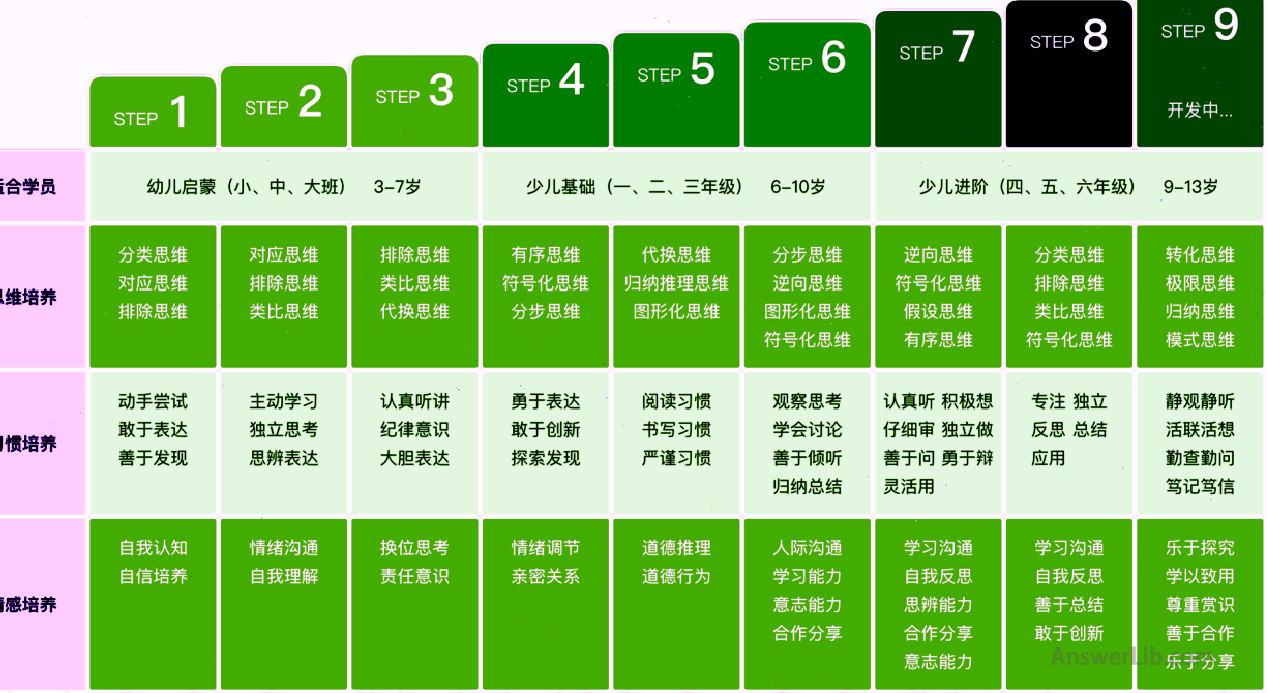
Early enlightenment stage:
- STPE 1 to STEP 3;
- Mainly targeting young children from 3 to 7 years old, young children from classes to large classes;
- Cultivate its classification thinking, corresponding thinking, eliminating thinking, ratio of thinking, and changing thinking ability;
- Follow the habits of learning, daring to express, good at discovering, thinking independently, and listening carefully;
- Build self-awareness, self-affirmation, dependent thinking and responsibility awareness.
Children’s basic stage:
- Step 4 to STEP 6;
- For children from 6 to 10 years old, children in the first grade to third grades;
- Cultivate its orderly thinking, symbolic thinking, step-by -step thinking, replacement thinking, inductive reasoning thinking, graphical thinking and reverse thinking ability;
- Develop the habits of being courageous to express, dare to innovate, diligent in reading and writing, good at observing thinking, and effective communication;
- Build self-emotional regulation, self-moral constraints, establish interpersonal relationships with mutual trust and mutual respect, and learn the spirit of learning and sharing.
Children’s advanced stage:
Step 7 to Step 9;
For 9 to 13 years old, the fourth grade to the sixth grade children;
Cultivate hypothetical thinking, orderly thinking, transformation thinking, extreme thinking, and pattern thinking;
Develop independent focus on learning, can reflect on the content of the learning.Qinqin asked, the study habits of conviction believe;
Build a learning quality of self-reflection, firm will, respect for appreciation, and exploration.
3.. Steps of pea thinking teaching
Pea thinking uses the international advanced 6E teaching method.Starting from stimulating children’s learning interest, introducing classroom content, and then summing up to consolidate what they have learned, and finally judge the learning effect by evaluating.
- ENGAGE ( Introduction): Stimulate children’s interest in class theme through gaming scenarios.
- Explore ( Exploration): Lead children to explore and understand knowledge about the concepts of classroom theme through the media and tools.
- Explain ( Explanation): Operation and teacher guidance to help children understand and think about what they have learned.
- Extend ( Expansion): Through expanding learning, children use their knowledge and concepts to more situations to solve more complicated problems.
- Express ( Expression): Children try to summarize and summarize the theme of the class and perform clearly.
- Evaluate ( Evaluation): Children and teachers summarize and evaluate their learning effects together.
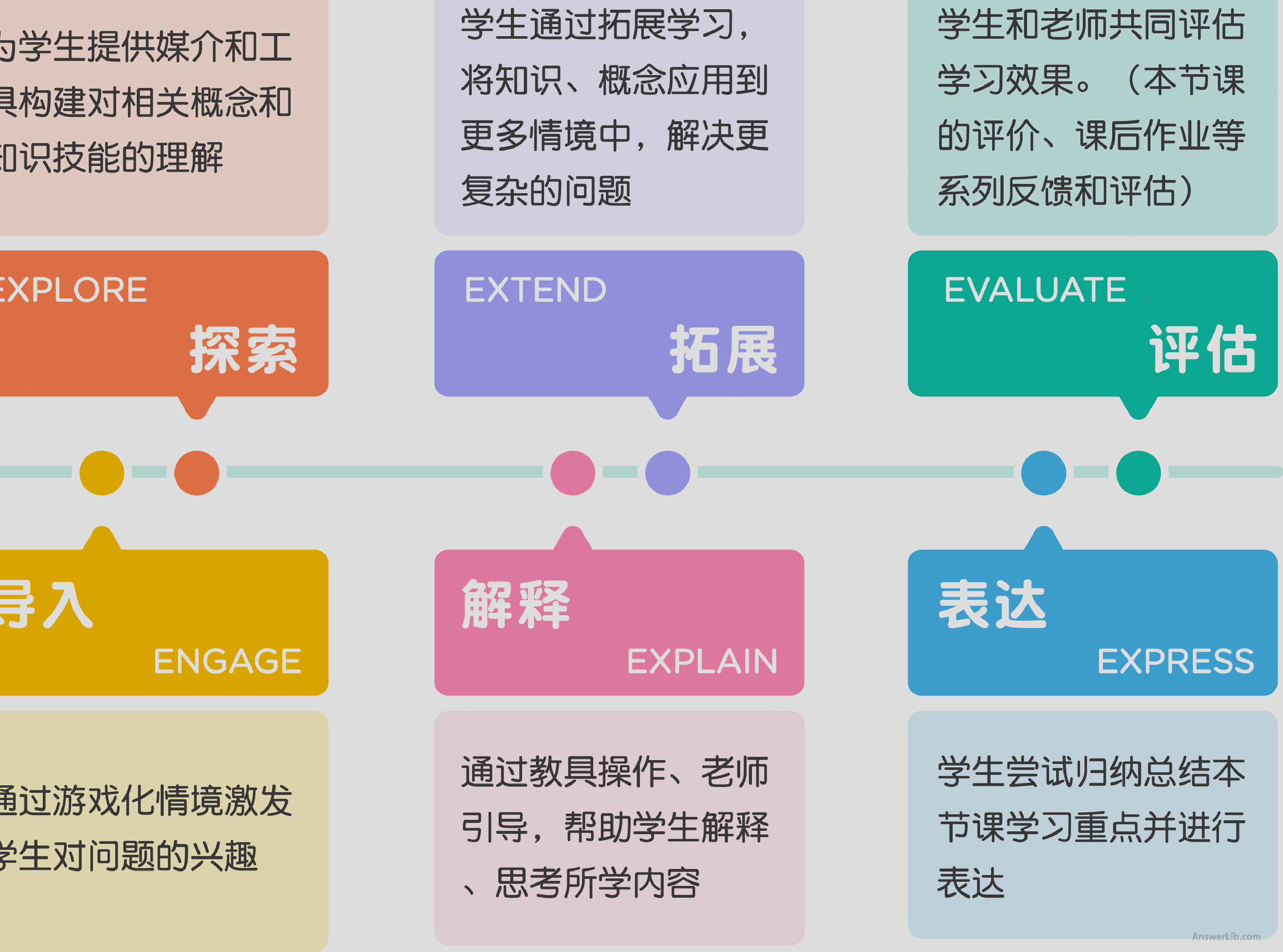
4.4.. How to take a class in pea?
Pea thinking adopts the form of real-life explanations and courseware playback.
- In the real-life explanation session, teachers use professional skills to create an active classroom atmosphere, guide children to quickly enter the classroom learning model, and understand and train the content of the training in active interaction.
- Pea thinking has carefully produced a large number of courseware to help children watch the courseware in the mode of games+breakthroughs, so that children can truly learn in games and enjoy happiness in learning.


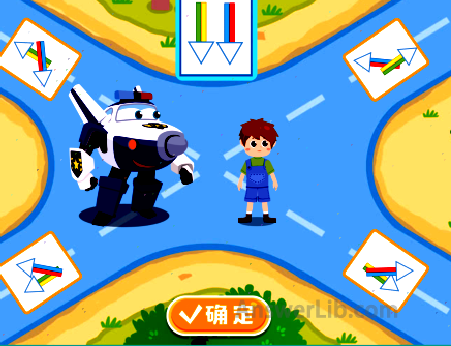
- Pea thinking provides a variety of teaching aids.In the classroom, it will provide different teaching aids for each theme of each lesson.Under the leadership of the teacher, it will perform practical operations to master classroom knowledge more specific and more authentic.
5. The language of pea thinking
At present, the language of pea thinking is mainly standard Mandarin.Therefore, children need a certain ability to listen and speaker in order to better interact with the teacher.If you don’t know how the effect of the class, you can try one lesson to see how the child’s learning effect is, you can also listen to it and feel the effect of the class.
common problem
Question 3: Which children are suitable for pea mathematical thinking courses?Pea mathematical thinking courses mainly cultivate children’s mathematical thinking methods, that is, to cultivate children’s Cognitive Thinking and Reasoning.
In many primary schools and middle schools in the United States, there will be Gift and Talent Program (GT Program).Admission requires tests.Pea thinking courses are particularly suitable for children who want to join GT Program.
See More
At present, the price of the course we know is as follows:
13 lessons for lessons, ¥ 1588, gift 2 live lessons, 12 AI enlightenment courses, 8 AI Rubik’s cube boutique class
27 lesson courses, ¥ 3188, gift 3 live broadcast lessons, 12 AI enlightenment courses, 8 AI Rubik’s cube boutique class
54 lesson courses, ¥ 5888, given 6 live broadcast lessons, 12 AI enlightenment courses, 8 AI Rubik’s cube boutique courses, concentration training camp
101 classes, ¥ 8888, give away 10 live broadcast lessons, 12 AI Enlightenment courses, 8 AI Rubik’s Cube Boutique Course, Focus on Training Camp
See More
There are the following characteristics of pea thinking courses:
Real-human scenic lectures: Teachers are interacted with online real-time interaction and collide with human wireless thinking sparks in the interaction with real people.
Small class system teaching: Pea thinking adopts a small class to teach.Teachers can take care of all children, while building a benign competitive atmosphere between children and stimulate children to learn enthusiasm.
Target division: Prior to the official entering the class, the children’s class teacher will understand the child’s personality, learning progress, and learning habits in an all-round way, and then divide it to the class that is most suitable for children according to the specific situation of the children.The academic companion continuously stimulates your potential.
Data analysis and learning: Pea thinking will generate real-time learning reports after each section.In the form of visualized dataCorrect and make up for it.At the same time, the exercises that children need to complete will also generate data reports to analyze the children still have not understood content when they use they have learned the contents to better grasp what they have learned.
Encourage long-term active participation: Pea thinking provides a complete curriculum system and sets functions such as “Our Parents’ Supervisory Course”, “Our Parent Classroom”, “Our Parent Guidance Video” for our parents, so that our parents can understand their children’s learning progress in real time.At the same timeFeel our parents’ attention to themselves.
Cooperate with teaching aids: According to different learning stages, pea thinking has prepared children in the classroom, game teaching aids, and cooperation interactive teaching aids for children to meet the children in the classroom to understand the content of the classroom more specifically.Teaching aids to consolidate what you have learned, stimulate your unique thinking sparks, and cultivate important team cooperation capabilities.The following is the teaching aid package sent by the teacher if you officially purchase lessons.
See More
